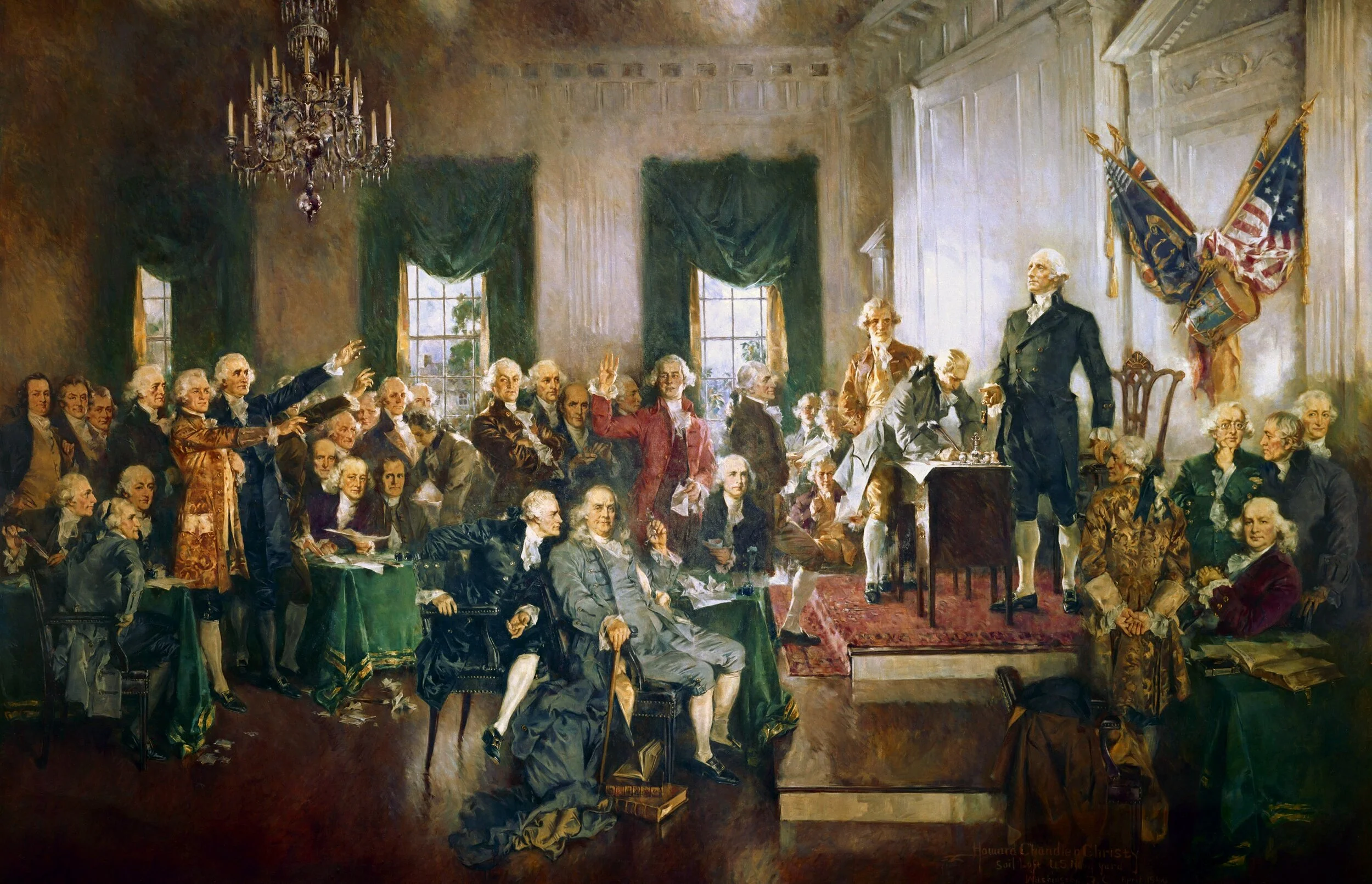Don't Trust the Narrative
/Knowing how to assess information is the most important epistemological skill. Most people collect far more information by reading or listening to what others say than from experimenting or observing phenomena themselves. Faced with a flood of information from many sources, it’s important to correctly judge which sources are reliable. If you believe what you are told, even when it is nonsense and lies, you’re worse off than a perfectly ignorant person.
Correctly assessing information becomes easier when you distinguish evidence from narrative. Evidence often provides real proof, and sufficient justification for belief. Narrative never does. Narrative is not the information. Narrative is the way information is described. Narrative involves adjectives and figures of speech. It sometimes involves over-generalization (“Everybody always eats turkey for Thanksgiving”) or exaggeration or intuitive leaps or retrospective certainty.
Narrative is natural and necessary. People think with words. Even the most quantitative-minded sort of person (I’m one of them), articulates the meaning of data by describing it with words. Narrative is helpful, and it is enjoyable. But narrative isn’t where the truth lies.
Consider this passage from the personal memoirs of civil war general US Grant:
I saw an open field, in our possession on the second day, over which the Confederates had made repeated charges the day before, so covered with dead that it would have been possible to walk across the clearing, in any direction, stepping on dead bodies, without a foot touching the ground.
Do you believe that? Does it seem credible? It is certainly a vivid narrative, but it is not proof.
Grant says he saw “an open field.” He doesn’t say how big the field was, but he insists it was a field. A typical farm field in those days might have been five acres. To enable a man to “[W]alk across the clearing, in any direction, stepping on dead bodies, without a foot touching the ground,” the bodies must have been arranged evenly and spaced not more than three feet apart. That would require 12,100 bodies, which is four times the number killed at that battle. (Figure it as 43,560 square feet per acre times 5 acres divided by 18 square feet per body.)
Perhaps Grant’s field was smaller – say two acres. But even that would require 4,840 bodies, which is still a thousand corpses more than were killed across the entire battlefield, which was at least three miles across. If the clearing was smaller than two acres, it wouldn’t deserve to be called “an open field.” If the bodies weren’t evenly spaced, Grant’s gruesome trick wouldn’t have been possible. A smaller number of bodies might have been arranged in line to create a straight path across the field from east to west or from north to south. But Grant insists he could have walked “in any direction.”
The Shiloh battlefield was far out west and deep in Confederate territory. It was the result of a daring rapid advance up the Tennessee River and the cumbersome photographic equipment of 1862 couldn’t keep up. So no photographs were taken there. Below is a photograph taken by Timothy O’Sullivan in July 1863 at Gettysburg.
Now, I’m not suggesting that one picture taken at Gettysburg proves anything about what Shiloh looked like. They were different events. But the photographic record of the civil war is extensive, and there are hundreds of battlefield scenes like the one above. Not a single one of them shows battlefield casualties lying as densely or as regularly over such a large area as Grant describes.
Grant’s narrative is wrong. He did not see what he says he saw. It would be foolish and presumptuous of me to call Grant a liar or to suggest I know more than he did. So instead of drawing a line between Grant and myself, I draw the line between his facts and his narrative. Grant walked or rode over the field the day after the battle and he saw many dead soldiers. The historical record shows the number of dead was 3,482. That is certainly an appalling number of dead. But the stuff about stepping on bodies is not fact. It is not even information. It is narrative. It is colorful and evocative. But it is false.
Reports in 2020 regarding the British royal family provide another illustration of the deviousness of narrative. The British tabloid newspapers’ disapproval of Prince Harry’s American wife, Meghan Markle was obvious even to someone who cared as little about the royals as me, but this analysis by Vox, and this photo essay on Bored Panda showed the bias was extraordinarily cruel. According to Vox:
The royal family is historically a white institution. And so when Markle, a biracial woman, became a member, some heralded it as “progress.” But in late 2016, the same year it was announced she and Prince Harry were dating, the prince put out a statement condemning the “wave of abuse and harassment” Markle had already been subjected to.
Vox and Bored Panda reinforced and supported their message with examples of biased coverage. Kate Middleton was praised in the tabloids and Meghan Markle was criticized for doing the same thing. Meghan put her hands in her pockets in public, and the tabloids said this was tacky and not royal. They had nothing to say when Kate Middleton did it, or when the queen did. The Bored Panda article provides 15 paired pictures, showing in each case how Meghan Markle was disapproved for doing the same thing as Kate Middleton or the queen.
The tabloid stories are pure narrative. They don’t give any proof that Meghan Markle did anything wrong, because she didn’t, but they talk like she did and that is often enough to convince a careless reader. The narrative in those articles — the perspective, editorial stance or spin — shapes the message regardless of facts.
Here’s one more example of narrative obscuring facts. The 18th Amendment to the Constitution, adopted in January 1920, prohibited the manufacture, sale or transportation of alcohol nationwide. Thirteen years later, the 21st Amendment repealed Prohibition. Most Americans believe Prohibition was a terrible failure. They probably don’t know many facts. But they’ve been convinced by the narrative.
In historical fact, Prohibition was very popular. The New York Times recalls that the amendment passed through both houses of Congress and was adopted by 46 of the 48 states, all in record time. The notion that Prohibition was unpopular is a recent fabrication:
“For decades now, popular histories have concocted false stories that the majority of the public had never supported prohibition, or that prohibition was conceived by a “radical fringe” of Bible-thumping, rural evangelicals trying to codify their Puritan morality. We use the same language to vilify prohibitionists as we do to describe ISIS or Al Qaeda: calling them “deeply antidemocratic,” “extremists” and “zealots.”
At the time the 18th Amendment was adopted, the biggest social issue was not liquor itself. Alcohol was never illegal under Prohibition. The manufacture, sale or transportation of alcohol was.
The great social problem was the places where liquor was sold. Men drank in saloons, which were a combination of tavern, pawnshop, gambling den and whorehouse. Saloons specialized in getting all of a man’s money from him as fast as possible. The movement that succeeded in getting the 18th Amendment passed was the Anti-Saloon League.
Saloons weren’t just in the west. Every city in the country had them, and they catered to working men. Carrie Nation and Elizabeth Cady Stanton and other reformers going back 150 years or more, objected to saloons because men habitually went straight to the saloon on payday and spent their week’s wages all at once. A man with no money could trade his shoes or his coat for a drink. Saloons offered hot food to men who were buying liquor, and saloons were often the only dining option for a hungry man coming straight from a dirty job in a foundry or a slaughterhouse.
In popular movies, saloons are depicted as boisterous and sometimes violent. But there is a charm about them.
These three videos demonstrate the affectionate modern view of the saloon. But prior to Prohibition they were a serious social nuisance. There was a lot less singing and dancing in them than the movies show. Instead, there was mostly just drinking. Some whoring and murder, but mostly just serious drinking.
Prohibition was the law of the land for 13 years. The impact of Prohibition on federal revenues, on the family and on American culture is complex. When Prohibition was repealed in 1933, citizens resumed drinking, but the rowdy, family-wrecking saloon never returned. Prohibition seems less like failure when you include those details in the narrative.
Narrative is good. A well-told story is enjoyable and a good story teller is an artist. A good story doesn’t have to be true. But when you are looking for authoritative information to justify belief, then you need to separate the facts from the narrative. Trust the facts, maybe. Don’t trust the narrative.
Discuss:
Can you give an example of a time when facts got twisted by the way someone told the story?
How can you guard against being deceived by narrative?










